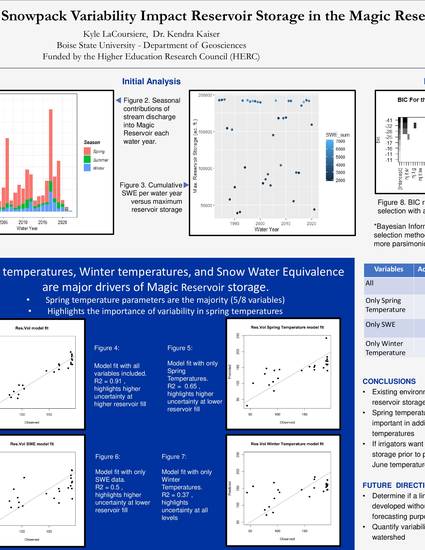
Water users in the state of Idaho are dependent on reservoir storage for irrigation during the dry season. By knowing the reservoir storage early water users can decide on how much water to use and when to use it. We want to predict reservoir storage so that water users can then have early access to the upcoming storage levels and can then decide the action needed in using the predicted reservoir storage. To predict reservoir storage, we used a linear regression automated model selection that highlighted the important variables of Spring temperatures, Winter temperature at Soldier R.S. SNOTEL site, and Snow Water Equivalence (SWE) at Camas Creek Divide SNOTEL site. The model found that these variables are the major drivers of predicting maximum reservoir storage at Magic Reservoir in Idaho. The implication of this finding is that spring temperatures play a larger role in prediction reservoir maximum storage than Snow Water Equivalence. This is impactful as spring temperatures are not thought of as a major driver in predicting reservoir maximum storage, when in accordance with the results shown from this study spring temperatures are a major driver in predicting reservoir maximum storage.
Available at: http://works.bepress.com/kendra-kaiser/24/
